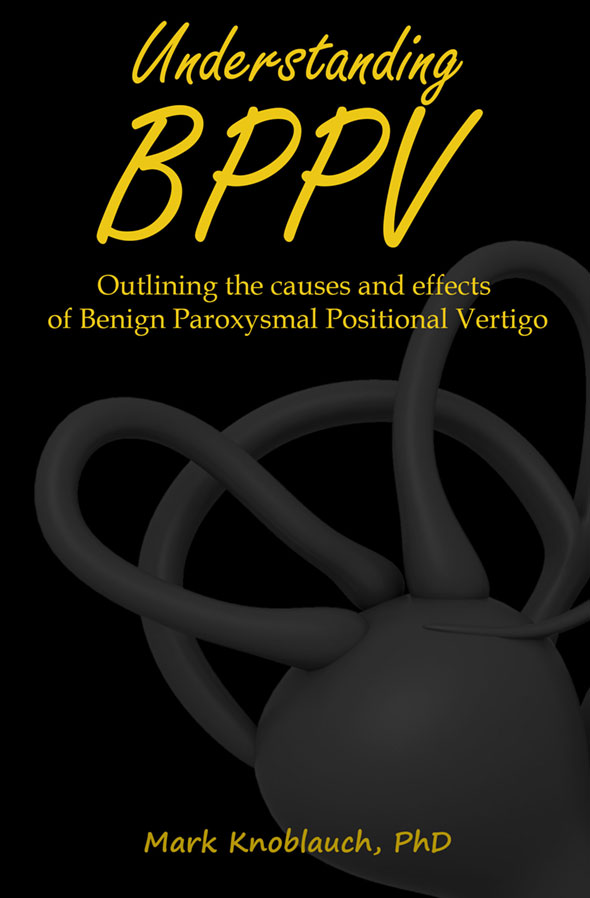Understanding BPPV: Outlining the causes and effects of Benign Paroxysmal Positional Vertigo
Synopsis
An accidental bump to the side of his head was all it took for Mark Knoblauch’s world to start spinning . . . literally. What followed were months of confusion, frustration, and a bit of annoyance as to why a rapid onset of vertigo would set in anytime he looked upward. Eventually, he found his answer. It turns out he was feeling the effects of the most common vestibular disorder out there – BPPV.
Benign Paroxysmal Positional Vertigo is a condition that triggers vertigo when the head is placed in a particular position. Furthermore, the vertigo ceases once the head is repositioned. Despite the somewhat forceful symptoms inherent to BPPV, the underlying cause of BPPV is relatively minor and can typically be fixed with a simple visit to a medical professional’s office.
Because of his own experience with BPPV, Mark wrote Understanding BPPV so that new patients affected by this condition can have a solid resource guide outlining just what BPPV is, how it occurs, and how it is treated. Particular attention is focused on the anatomy of the ear, and how this anatomy is involved in generating the symptoms associated with BPPV. Mark also details the latest research into BPPV and provides an overview of the various diagnostic tests and treatments used to help BPPV patients in many cases get back to a vertigo-free life.
Excerpts
BPPV has been called the most common vestibular disorder. One study of 590 patients evaluated for dizziness found BPPV to be the underlying cause of the dizziness 33.9% of the time, more than ten percent higher than the next leading cause. Often, the first event of vertigo associated with BPPV is reported to occur in bed or when getting out of bed. And, the vertigo occurs each time the patient’s head is placed in a specific position, which may occur in conjunction with performing a particular movement such as looking upwards. If the head position is maintained, the vertigo usually continues for a while before gradually coming to a stop (i.e. ‘fatiguing vertigo’). Conversely, if the vertigo begins but then the head position is immediately changed, the vertigo typically stops.
The type of BPPV a person is experiencing (canalolithiasis vs cupulolithiasis) can be determined by evaluating the symptoms that are reported by the patient, specifically the type of nystagmus that is elicited. Canalolithiasis-based nystagmus is the most common type, lasting less than one minute in total duration and often exhibiting latency (i.e. taking a few seconds to occur) after the triggering head position is reached. Cupulolithiasis, on the other hand, is relatively instant in its occurrence and can last longer than a minute.
I read from cover to cover last night and am thankful for such great insight!!! First hand knowledge, additional study and what to expect is comforting.
![]()
The book is well outlined, an easy read, and very informative. I learned a lot and I thought I knew most everything about the condition. It is definitely a resource I will hold onto!
![]()
This book is amazing with details that make it easy for a non medical person to understand the workings of the inner ear. I highly recommend this book to be able to understand more about what causes BPPV and how to treat this..
![]()


